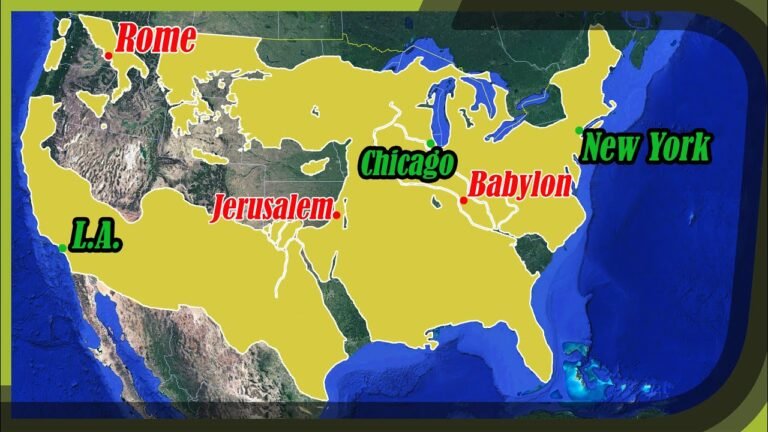Exploring the Old Testament Map of Israel
Exploring the Old Testament map of Israel unveils a rich tapestry of history, culture, and faith that has shaped the region for millennia. This ancient landscape, filled with significant cities, sacred sites, and dramatic topography, provides invaluable insights into the biblical narrative and the journeys of its key figures. As we delve into the geographical context of the Old Testament, we uncover the profound connections between the land and its enduring spiritual legacy, inviting readers to journey through time and discover the heart of Israel as depicted in these timeless scriptures.
- The Old Testament map of Israel illustrates significant biblical locations, including cities, regions, and geographical features that played a fundamental role in the narratives of the Hebrew Scriptures.
- Studying the Old Testament map provides insights into the historical and cultural context of ancient Israel, aiding in understanding the journeys of key figures such as Moses, Joshua, and the prophets.
Where is Israel located in the Old Testament?
In the Old Testament, the region identified as Canaan played a pivotal role in the narratives of ancient Israel. This area, located in the southern Levant, corresponds to modern-day Israel, the West Bank and Gaza, Jordan, and parts of Syria and Lebanon. As the backdrop for many significant events and stories, Canaan was not just a geographical location but a vital cultural and historical landscape that shaped the identity and experiences of the Israelite people.
How is the geography of Israel described in the Old Testament?
Ancient Israel, nestled between the Mediterranean Sea and the Fertile Crescent, showcased a diverse geography that played a fundamental role in its history and culture. The region featured eastern coastal plains that provided access to trade and communication, while the central highlands offered strategic advantages and fertile land for agriculture. To the south lay arid deserts, presenting challenges for survival, and the iconic Jordan River Valley, a vital water source, shaped not only the landscape but also the livelihoods of its inhabitants. This intricate interplay of geography influenced the development of ancient societies in the area.
What boundaries does the Bible assign to Israel?
The biblical borders of Israel are outlined in various passages, with Exodus 23:31 providing a more detailed description. This verse delineates the territory as extending from the Sea of Reeds, commonly identified with the Red Sea, to the Sea of the Philistines, which refers to the Mediterranean Sea. Additionally, the borders stretch from the desert region to the Euphrates River, emphasizing a significant expanse of land.
These geographical markers reflect not only the physical boundaries of ancient Israel but also its cultural and historical significance. The mention of “the River” in the Hebrew text points specifically to the Euphrates, suggesting a connection to the broader ancient Near Eastern context. As such, these boundaries serve as a reminder of the land promised to the Israelites, shaping their identity and heritage throughout history.
Journey Through Ancient Lands
Embarking on a journey through ancient lands is like stepping into a living museum, where every stone and relic tells a story of civilizations long past. Imagine wandering through the majestic ruins of Rome, where the Colosseum stands as a testament to human ingenuity and resilience, or exploring the serene temples of Egypt, where the echoes of pharaohs still resonate in the air. Each location offers a unique glimpse into the lives, beliefs, and customs of those who came before us, allowing us to connect with our shared history in profound ways.
As we traverse these historic landscapes, we become witnesses to the passage of time. The vibrant markets of Marrakech, with their bustling energy, contrast beautifully with the quietude of the ancient Greek ruins, yet both carry the weight of their heritage. Every corner reveals hidden gems, from intricate mosaics to towering obelisks, inviting travelers to pause and reflect. This journey is not just about seeing ancient sites; it’s an opportunity to immerse ourselves in the cultures that shaped our world, sparking a deeper appreciation for the legacies that continue to influence us today.
Unveiling Biblical Geography
The Bible is not just a spiritual text; it is also a rich tapestry of geographical locations that shape its narratives. From the lush landscapes of the Garden of Eden to the arid deserts of Sinai, the physical settings provide context that enhances our understanding of the stories within. Each place mentioned in the scriptures carries its own significance, often reflecting the cultural and historical backdrop of the times. By exploring these locations, readers gain a deeper insight into the lives of biblical figures and the events that unfolded.
Mapping the ancient world of the Bible reveals a complex interplay between geography and the divine. Cities like Jerusalem and Bethlehem serve as pivotal points in the narrative, symbolizing hope and promise. The journeys of prophets and disciples across mountains, rivers, and valleys illustrate not only their physical travels but also their spiritual missions. Understanding these geographical connections allows modern readers to appreciate how the landscape influenced the choices and beliefs of those who walked it.
Engaging with biblical geography invites a fresh perspective on familiar stories. As we trace the routes taken by key figures, we uncover layers of meaning that resonate with contemporary life. The hills where Jesus preached, the shores of Galilee, and the paths of the Exodus encourage reflection on faith, perseverance, and community. By unveiling the physical settings of the Bible, we enrich our spiritual journeys and connect more profoundly with the narratives that have shaped countless lives throughout history.
Tracing Sacred Paths
In the heart of ancient landscapes, sacred paths wind through time, inviting wanderers to explore the stories etched into the earth. Each step taken along these trails reveals a tapestry of history, spirituality, and nature’s beauty, connecting the past with the present. From the tranquil whispers of sacred groves to the resonant echoes of forgotten rituals, these routes serve as a bridge to the divine, encouraging introspection and reverence. As travelers embark on these journeys, they not only uncover the rich heritage of their surroundings but also forge a deeper connection with their own spiritual selves, transforming each trek into a pilgrimage of discovery.
A Cartographer’s Guide to Faith
In the intricate landscape of belief, faith serves as a compass, guiding individuals through the diverse terrains of spirituality and understanding. Just as a cartographer meticulously charts the contours of a land, so too do we navigate the complexities of our convictions. Each person’s journey is unique, shaped by personal experiences, cultural influences, and the quest for meaning. By exploring various faiths, we discover not only the paths taken by others but also the uncharted territories within ourselves.
As we traverse the map of spirituality, we encounter landmarks of inspiration and moments of doubt. These experiences act as waypoints, illuminating our understanding and challenging our perspectives. Encountering different belief systems fosters empathy and broadens our horizons, allowing us to appreciate the rich tapestry of human spirituality. In this exploration, questions arise, inviting us to delve deeper into our own beliefs and to seek connections with others along the way.
Ultimately, faith is not a static destination but an evolving journey. A cartographer of faith recognizes that the map is never complete; it is continually redrawn by new insights and revelations. Embracing this dynamic nature of belief enables us to remain open to growth and transformation, fostering a sense of community as we share our discoveries. In the end, the journey is as significant as the destination, uniting us in our shared quest for understanding and meaning in the vastness of existence.
The old testament map of Israel serves as a vital tool for understanding the historical and geographical context of biblical events. By visualizing the ancient landscapes, cities, and tribal territories, readers can deepen their appreciation for the narratives that have shaped religious beliefs and cultural identities. This map not only enriches our comprehension of scripture but also invites exploration into the enduring legacy of these ancient stories in today’s world.







